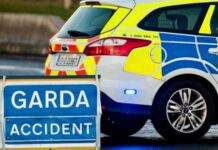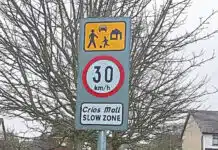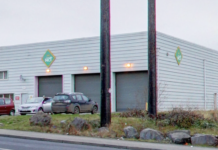
Scattered snow showers overnight and today may lead to hazardous road conditions throughout the country today. The RSA are advising all road users to be aware of black ice on the roads and slippery road conditions.
The RSA has issued the following advice to road users;
Flooding & Gale Force Winds
· Monitor radio weather and traffic broadcasts while travelling and heed any Garda messages.
· It takes longer to stop a vehicle on wet roads so slow down and allow extra distance between you and the vehicle in front. The 2 second rule becomes the 4 second rule in bad weather and poor visibility according to the conditions.
· Take special care when driving behind goods vehicles as they generate a considerable amount of spray which reduces your visibility, hold back to where you can see their mirrors.
· Watch out for falling/fallen debris on the road and vehicles veering across the road and the reaction of other road users.
· Control of a vehicle may be affected by strong cross winds. High sided vehicles and motorcyclists are particularly vulnerable to strong winds.
· Flooding and slippery road surfaces make driving particularly hazardous so always drive with care and caution. Expect the unexpected.
· Be mindful of surface water. You don’t know how deep it is and it may contain hidden objects that could cause you to stall or damage your tyres.
· Be mindful of Aquaplaning on roads. Aquaplaning occurs where the tyre tread fill with water and is unable to disperse it.
· After going through water, drive slowly with your foot on the brake pedal for a short distance – this helps to dry the brakes.
· Watch out for vulnerable road users such as pedestrians, cyclists and motorcyclists and allow extra space.
· Driving in such conditions will result in reduced visibility. Use dipped headlights.
· Check tyres, including the spare to ensure minimum tread depth of 1.6mm and guarantee correct tyre pressures.
Freezing Temperatures
· Watch out for “black ice.” If the road looks polished or glossy it could be, “black ice” one of winter’s worst hazards: Black Ice is difficult to see! It is nearly transparent ice that often looks like a harmless puddle or is overlooked entirely. Watch out for black ice, especially in sheltered / shaded areas on roads, under trees and adjacent to high walls.
· If driving in snow, gently does it. Manoeuvre gently, slow down and leave extra distance between you and the vehicle in front. Too much steering is bad and avoid harsh braking and acceleration. Use the highest gear possible to avoid wheel spin. Select a low gear when travelling downhill especially if through bends. Falling snow, fog, rain, or hail will reduces visibility. Do not hang on to the tail lights of the vehicle in front of you as it can give a false sense of security. When you slow down, use your brakes so that the brake lights warn drivers behind you.
· Watch out for vulnerable road users such as pedestrians, cyclists and motorcyclists and allow extra space.
Pedestrians and cyclists are advised to;
· Be seen. Wear bright clothing with reflective armbands or a reflective belt.
· Take extra care when near traffic or crossing the road in extremely windy conditions as sudden gusts can blow you into the path of an oncoming vehicle.
· While walking on footpaths and in public places, or entering and exiting your car or truck, DO NOT underestimate the danger of ice.
· Many slips and falls happen in places people regard as safe and secure, typically outside their front door, on the door step, on the path or while getting out of the car. It is very possible that a thin sheet of transparent ice or “Black Ice” is covering your pathway putting you at risk. When you approach a footpath or roadway that appears to be covered with ice, always use extreme caution.
· If walking or cycling in fog, make sure you are clearly visible by carrying a torch and wearing reflective clothing. Stay well in off the road where there is no footpath when vehicles are approaching.
For advice on severe weather driving tips please see severe weather advice on the RSA website or check out the RSA Facebook and Twitter pages.
For more weather updates visit Met Eireann’s website www.met.ie










